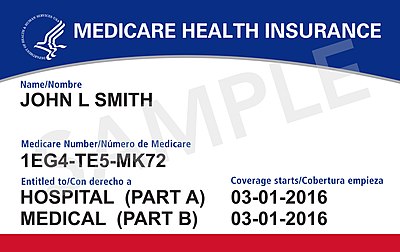
— Photo by HurwiczRocks
By SHEFALI LUTHRA
For Kaiser Health News
While healthcare uncertainty roils Washington, the rest of the country is coasting toward signup season on the Affordable Care Act insurance exchanges.
Open enrollment is just about a month away. But the current landscape is marked by funding cuts and other White House efforts to pull back on ACA outreach, which has led some people to brace for what they foresee as the toughest season yet.
And the latest wrinkle? In states that use the federal marketplace, healthcare.gov, many navigators — nonprofit groups and workers who receive federal funding to help consumers enroll — are hitting snags completing a mandatory certification course. Those credentials are required before they can formally advise consumers or organize educational events about getting coverage.
To be sure, the training — which involves buggy, not-so-user-friendly software — has never been a smooth process.
But this year, many say they’re experiencing more technical glitches and — in a critical shift — getting less help from the Centers for Medicare & Medicaid Services, the federal agency tasked with supporting them.
“It used to be … you got the impression they were trying to help you,” said Randal Serr, director of Take Care Utah, a navigator organization based in Salt Lake City. “Now it seems, passively, this is not their priority.” He reports that he has experienced firsthand the slow responses to these technical difficulties.
CMS did not provide comment for this story.CMS
Chief among the complaints are repeated error messages and lost or unsaved work after sections of the training are completed.
Based on interviews with navigators as well as advocates and experts who work with their organizations, when these problems arise, they compound an already uphill climb to sign people up for ACA health coverage.
“I don’t know how much icing we need on this cake, but it’s more icing on the cake,” said Shelli Quenga, director of programs for the Palmetto Project, in South Carolina, whose federal grant was cut by more than 50 percent.
Software problems are occurring more frequently than in the past at her organization, Quenga said. Meanwhile, she added, it can take weeks before CMS resolves the issue — a delay she didn’t recall experiencing in previous years. On top of the funding cuts and administration’s messages that undermine enrollment, it’s “a new circle of Dante’s hell,” she said.
But even as navigators from a number of states report problems, others say their experiences haven’t differed from other years.
Adam VanSpankeren, a Wisconsin-based navigator, said he faced a few bugs in completing his training, but nothing unusual. When he sought technical support, he added, he received quick and thorough help. Amalia Benvenutti, a Georgia-based insurer, reported a similar encounter.
“There has always been the occasional odd bug with a particular module not saving or the site crashing — the interface is a bit clunky — but nothing that I would describe as more restrictive or onerous than previous years,” VanSpankeren said.
Daniel Bouton, who organizes the marketplace program at a Dallas-based navigator group and has already experienced some of these problems, sees a larger pattern. He worries that will almost certainly affect how many consumers can both access information about their insurance options and how many actually get covered.
Together, these challenges underscore the impact of the Trump administration’s broader disinterest in maintaining much of Obamacare’s vast apparatus.
“Local organizations are feeling the cut on funding. Then you move to, ‘OK, I’m not going to have enough funds for a strong marketing campaign. I’ll utilize my navigators, and go back to grass roots, and do door-to-door marketing.’ But then you go back to, ‘I can’t send my navigators out because they’re not certified,’” Bouton said. “I have this feeling of having our hands tied.”
And there are other potential delays. Many navigator groups saw their federal funding cut this year — a change that required them to submit new working budget proposals to CMS by last Wednesday. It’s unclear if or when they will receive federal approval, which some said could further cut into planning and outreach efforts.
Meanwhile, these challenges come as open enrollment — which starts Nov. 1 — for the first time lasts only six weeks compared with three months in previous seasons. CMS also indicated it will for the first time be shutting down the healthcare.gov website on most Sundays of open enrollment, which officials say is for maintenance. Sundays, though, have typically been a prime time for consumers to sign up.
And at the same time, the learning curve is steeper. Many consumers aren’t aware that the enrollment period is shorter, Quenga said. Because of congressional back-and-forth, she added, some aren’t even sure if Obamacare is still in effect.
“People need that in-person assistance to understand the subtleties and nuances of a very complicated system,” she said. “You’re cutting these people off at the knees.”






